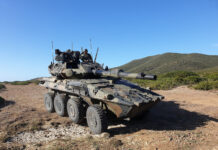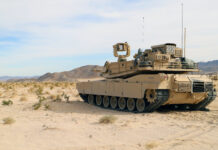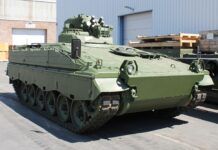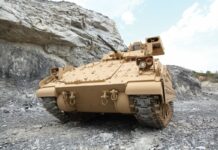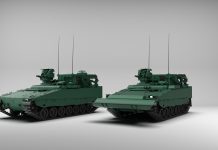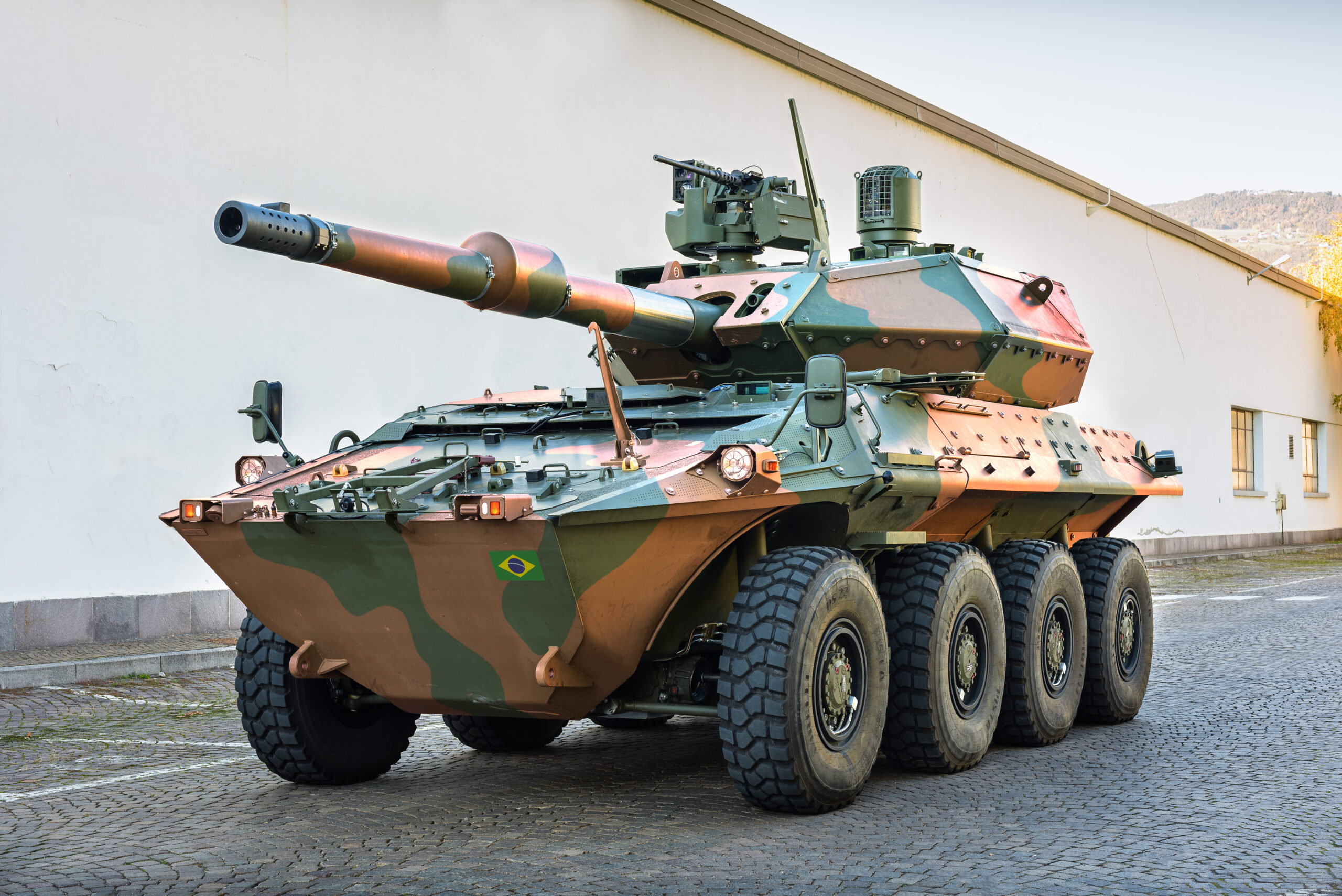
Brazil awaits its Centauro II mobile gun system
Victor M. S. Barreira
An ambitious plan by the Brazilian Army to modernise its armoured cavalry brigades is soon scheduled to reach a significant milestone with the arrival of the first two Centauro II 8×8 wheeled fire support armoured vehicles.
The Brazilian Army (Exército Brasileiro) counts 2,244 armoured vehicles in its six independent mechanised cavalry regiments, two armoured brigades, four mechanised cavalry brigades, and three mechanised infantry brigades according to the the Commander of the Brazilian Army, General Tomás Miguel Miné Ribeiro Paiva.
The initial two Centauro II for Brazil were produced in 2023, with the turret produced by Leonardo Electronics in La Spezia, and the wheeled platform manufactured by Iveco Defence Vehicles (IDV), in Bolzano. These are scheduled to be shipped to Brazil between June and July 2024, the Brazilian branch of IDV told ESD. Shortly after the first two vehicles arrive in Brazil, they will undergo a final technical and operational evaluation by personnel of the Armoured Instruction Center (CI Bld) at the Army Evaluations Center (CAEx). Formal delivery of these vehicles to the Exército Brasileiro is scheduled to take place in 2025. If the two vehicles are approved, a second tranche of seven Centauro II vehicles for doctrinal experimentation will be purchased, a Brazilian Army spokesperson told ESD. An additional 89 serial production vehicles are planned to be gradually procured out to 2037, bringing the total to 96 vehicles over this timeframe, at a cost of BRL 3.3 billion.

Credit: CIO
The Centauro IIs are intended to gradually replace part of the EE-9 Cascavel 6×6 armoured reconnaissance vehicle fleet. According to the delivery plan for the first 96 Centauro IIs, 18 vehicles are earmarked for the 2nd Mechanised Cavalry Brigade, 36 for the 4th Mechanised Cavalry Brigade, 36 for the 1st Mechanised Cavalry Brigade and six for the 1st Jungle Infantry Brigade by 2037. Up to an additional 113 Centauro IIs could be later acquired depending on the available budget, the Brazilian Army spokesperson said.
Several Brazilian Army personnel are currently finalising initial operational and maintenance training on the Centauro II in Italy. A firing course also took place at the Italian Army ranges in Montelibretti and Nettuno to evaluate the main gun. CIO informed ESD that it will deliver a complete integrated logistics support (ILS) and training package.
The Centauro II was formally selected on 25 November 2022 by the Brazilian Army’s Logistics Command (COLOG) to meet its Viatura Blindada de Combate de Cavalaria Média Sobre Rodas 8×8 (VBC Cav-MSR 8×8; ENG: 8×8 Wheeled Medium Armoured Combat Cavalry Vehicle project) requirement, which is part of Brazil’s Army Armoured Forces Strategic Programme (Prg EE F Bld). The Centauro II was selected over the General Dynamics Land Systems-Canada (GDLS-C) LAV 700 AG and NORINCO ST1-BR vehicles. This announcement followed a request for proposal (RFP) issued by COLOG for two vehicles issued on 20 July 2022. Soon after the selection, on 15 December 2022, Iveco Oto Melara Società Consortile (CIO), a joint venture between Iveco Defence Vehicles (IDV) and Leonardo, was awarded a contract by COLOG for an undisclosed amount for two Centauro II vehicles.
Modernising the cavalry brigades will contribute to further developing the local defence technological and industrial base. However, the incorporation of the Centauro II into the Exército Brasileiro’s armoured vehicle inventory represents a challenging innovation, since this is the first time the service will field an armoured vehicle with a 120 mm gun and comprehensive intelligence, reconnaissance, surveillance (ISR) and target acquisition capabilities.
The commander and gunner’s sights, the electric stabilisation servo system, and the fire control system, are all produced by Leonardo Electronics, CIO told ESD. The LOTHAR SD two-axis gyro-stabilised sight provides the gunner with day and night identification, recognition and targeting capabilities. The Attila-D multi-spectral optronic sensor suite provides the commander with panoramic observation, as well as target detection, identification and designation capabilities.
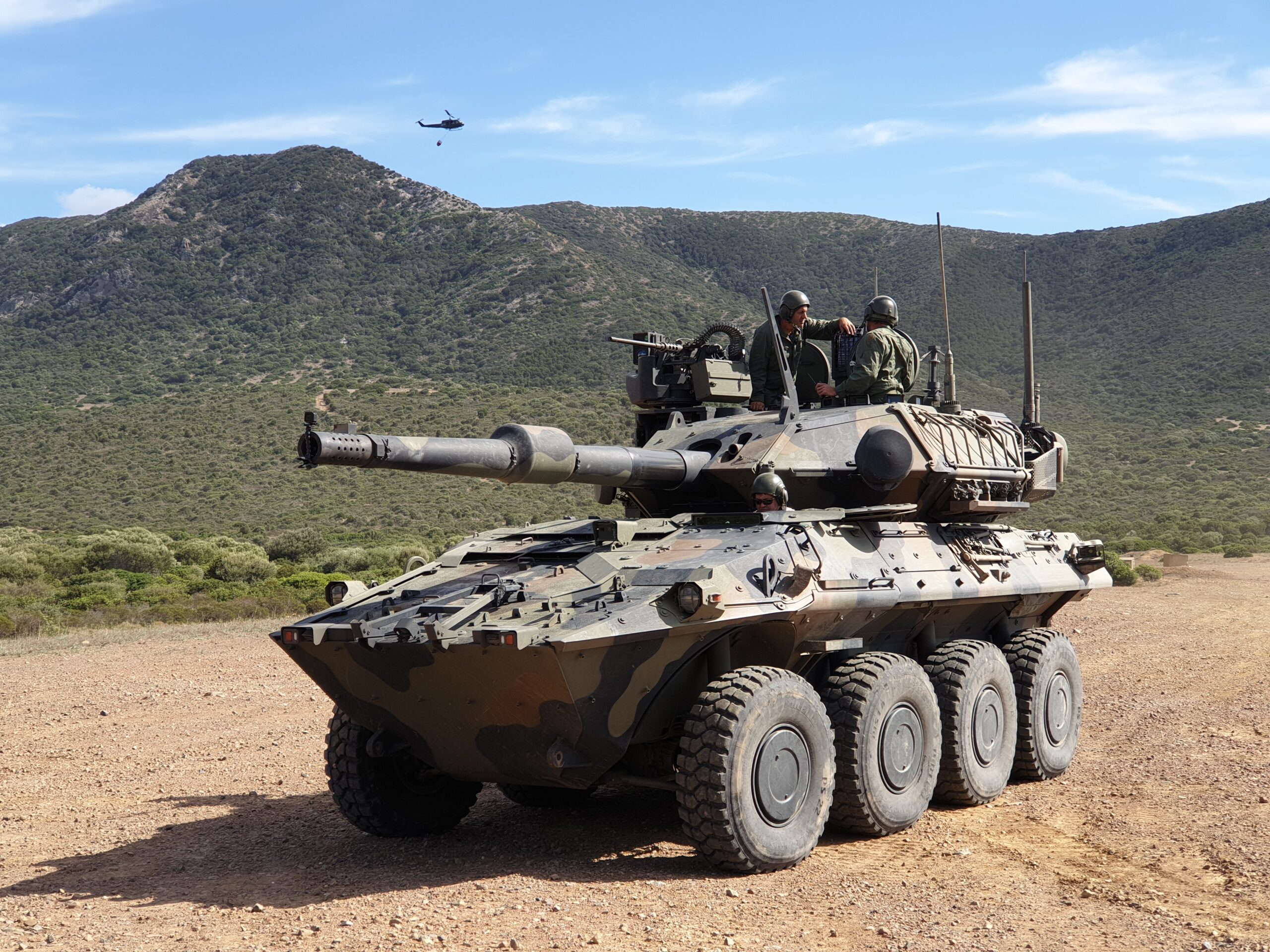
Credit: CIO
The Centauro II’s platform consists of a high hardness monocoque steel hull with mine and ballistic armour protection suite capable of handling threats such as mines, improvised explosive devices and kinetic munitions, in addition to a driveline featuring a single-differential twin-shaft design and the HITFACT MkII modular protected manned turret with a digital architecture.
The Brazilian configuration of the HITFACT MkII manned turret comes with a stabilised 120 mm L45 low-recoil smoothbore high-pressure gun with integrated muzzle brake, a coaxial 7.62 × 51 mm FN Herstal MAG58 machine gun, a pintle weapon mount armed with an MAG58 7.62 mm machine gun, eight 76 mm smoke grenade dischargers, meteorological sensor and wire cutters. The main gun is capable of firing most NATO-standard 120 mm ammunition natures.
As a potential replacement to the pintle weapon mount, discussions are already underway to explore the possibility of adding the REMAX 4 remote weapon station (RWS) produced by Brazilian company Ares Aeroespacial e Defesa to the next tranches of the Brazilian Centauro II, the company told ESD. This would allow use of either a 7.62 mm or 12.7 mm machine gun. However, the first two vehicles will only feature the pintle weapon mount.
The Centauro II for Brazil has a crew of four, comprising the driver, commander, gunner and loader. While the vehicle is optionally available with an autoloader, Brazil has opted for the manually-loaded configuration. The driver is provided with a situational awareness suite which is understood to include day and thermal cameras. The command and control (C2) package will be delivered as government-furnished equipment (GFE) and will consist of the L3Harris Falcon III VHF radio set, Thales SOTAS M3 intercom and the SGB battle management system (BMS). However, the radio could be replaced later on by a software-defined multi-band radio being developed by the Army Technological Center (CTEx) and AEL Sistemas as part of the RDS-Defesa project. Other locally-developed solutions could also be integrated on Brazil’s Centauro II.
The Centauro II is powered by an Iveco Vector V8 EURO III-compliant engine developing 537 kW (720 hp), coupled to a 7+1 speed ZF Ecomat 7HP902 automatic transmission that drives eight wheels, with steering on the 1st, 2nd, and 4th axles. The wheels are fitted with run-flat inserts and use 14.00 R20 Michelin ZXL or XML tyres. The wheel stations are each equipped with independent hydro-pneumatic suspension, and connected to a central tyre inflation system (CTIS). A travel lock system for the main gun, a CBRN protection system, fire-fighting equipment and air conditioning unit also are available.
The Centauro II has a gross vehicle weight (GVW) of 30 tonnes, in terms of dimensions has a length of 8.26 m, width of 3.12 m and height of 3.65 m. In terms of mobility, it is capable of attaining maximum speeds of 105 km/h on paved roads, and has a maximum cruising range of 800 km. The vehicle can negotiate gradients up to 60%, and side slopes of 30%; additionally, it has a turn radius of 9 m, and can ford water up to a depth of 1.5 m without preparation.
Serial production vehicles for Brazil are scheduled to include a comprehensive package of offsets to be directed to the national defence technological and industrial base. The local content, which is still being discussed, could initially include the production by Indústria de Material Bélico do Brasil (IMBEL) of 120 mm TP-T training ammunition, and other round types at a later date. The development of a driving simulator and turret crew simulator by AEL Sistemas and Ares Aeroespacial e Defesa is also being discussed.

Credit: Victor Barreira
The contracts for the production vehicles could eventually lead to the assembly of the Centauro II at IDV’s Brazilian plant, located in Sete Lagoas, in Minas Gerais state. The plant manufactures the VBTP-MSR Guarani 6×6 vehicle for Brazil and also for export, and is due to assemble the 4×4 VBMT-LSR Guaicurus 4×4 wheeled multi-role armoured vehicle, also for Brazil.
The ambitious Prg EE F Bld strategic programme is aimed at mechanising Brazil’s infantry and cavalry brigades by 2040, and includes the provision of the requisite simulators, logistics support and infrastructure. It consists of two subprogrammes: the S Prg Vtr Rodas subprogramme for the acquisition of VBTP-MSR Guarani and VBMT-LSR Guaicurus armoured vehicles, 155 mm wheeled howitzers, MaxxPro MRV-P armoured recovery vehicles, and the modernisation of EE-9 Cascavel fire support vehicles; and the S Prg Vtr Lagartas subprogramme for the acquisition of a main battle tank (MBT) armed with a 120 mm gun and a tracked infantry fighting vehicle (IFV) fleet with a medium-calibre cannon, as well as the modernisation of Leopard 1A5BR and M113BR armoured vehicles.
Victor M. S. Barreira






